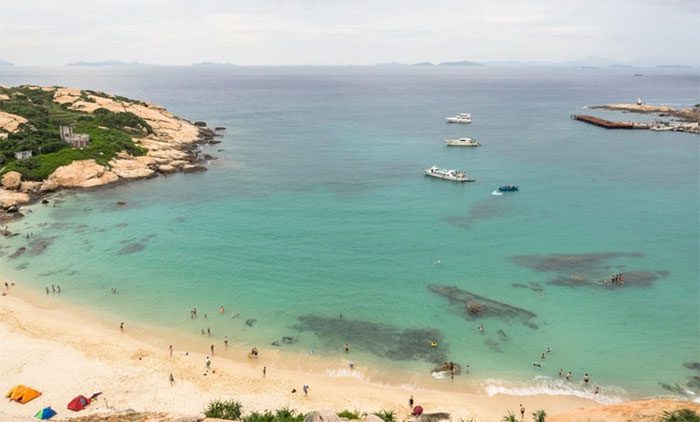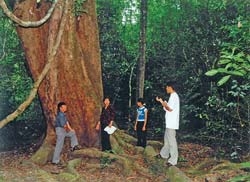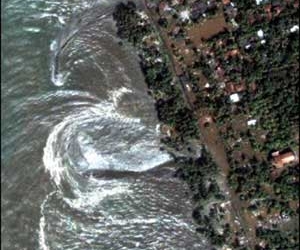Legend has it that Miao Luan Island in southeastern China is blessed by the sea god, with an abundance of fresh water that never runs dry.

500-meter-long sandy beach in Ha Feng Bay, Miao Luan Island.
Miao Luan Island is situated in the middle of the Gai Bong archipelago, part of the Van Son Islands, southeast of Zhuhai city, approximately an hour’s journey by high-speed train from Guangzhou.
This small island is only one-third the size of the Summer Palace, a famous royal garden in Beijing that covers nearly 6,000 hectares. The island is steeped in legends of the sea god, who blesses the residents with an endless supply of fresh water.
In reality, the island has its own unique water filtration system, represented by the 500-meter sandy beach in Ha Feng Bay. Interestingly, this sandy beach was not formed from the rocky mountains on the island. The rocks on the island are primarily granite, composed mainly of quartz, feldspar, and mica. In contrast, the primary component of the beach sand is limestone, a type of rock known for its water-filtering properties. So where does this limestone come from?
Not far from the island is a marine area rich in the remains of dead organisms. These provide an excellent source of limestone for the island. Each day, the seawater erodes the remains of marine life, gradually building up the sandy strip for the island. The sand here is incredibly fine, with a particle size smaller by several dozen percent compared to regular sand.
Sea water seeps through the layers of fine sand. During this process, salt and other minerals adhere to the limestone in the sand, leaving only fresh water behind. This is why the island is often referred to as the Maldives of China, abundant in fresh water.





















































